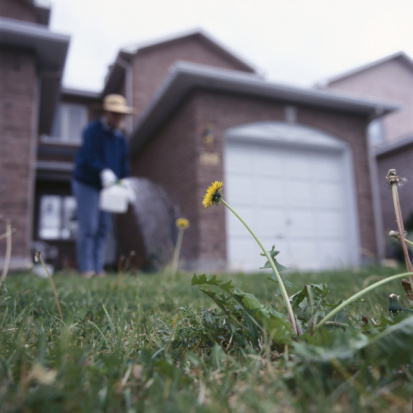 Here is a recent guest blog post wrote for The ZRT Laboratory Blog. Click here to read the original article.
Here is a recent guest blog post wrote for The ZRT Laboratory Blog. Click here to read the original article.
Spring is here! Now is the time to talk to your patients about the risks of chemicals in herbicides and pesticides to the health of their family and pets.
Roadside, clear cut and yard spraying is polluting our environment, with the chemicals becoming air-borne and also getting into ground water. People and pets walking outside are absorbing these chemicals through their skin and bringing it inside our homes. Rural families have little or no control over their neighbors who may decide to clear cut their land and then aerial spray herbicides.
These herbicides are not safe. “Weed killer kills human cells. A study intensifies debate over ‘inert’ ingredients. Used in yards, farms and parks throughout the world, Roundup has long been a top-selling weed killer. But now researchers have found that one of Roundup’s inert ingredients can kill human cells, particularly embryonic, placental and umbilical cord cells. The new findings intensify a debate about so-called “inerts” — the solvents, preservatives, surfactants and other substances that manufacturers add to pesticides. Nearly 4,000 inert ingredients are approved for use by the U.S. Environmental Protection Agency”. (1)
These herbicides, pesticides and other chemicals are known as “estrogen mimickers,” “hormone disrupters,“ or xenoestrogens. These estrogen-like chemicals bind in estrogen receptor sites which are fat bound. Estrogens and estrogen mimickers from herbicides and other substances, increase vascular patterns and metabolism in the breast. If you have a group of cells that have become abnormal and are growing, or a a cancerous tumor is present, nitric oxide is released from these abnormal cells. If the vascular network has increased in the area of the tumor and the vessels are now dilated due to the release of nitric oxide and the increased availability of oxygen and nutrition, tumor doubling time is likely to become deadly. Tumors set up their own blood flow known as neo-angiogenisis.The medical literature on pesticides/herbicide exposures is clear on the fact that these chemicals harm neurological, reproductive and hormonal systems. (2)
There has been a disturbing pattern involving women who had pesticide and herbicide exposure having abnormal Infrared scans with unusually high estrogen dominance involvement with the tissues and higher incidences of breast cancer. An infrared camera can detect changes in physiology/ heat in the tissues both as vessels and in color palates and has a 97% sensitivity.(3) (4) When abnormal cells begin to accumulate they begin to put up heat signatures due to their metabolic activity. As the cells become a tumor they are warmer still and they create their own vascular system to feed a growing tumor.
Genetics only contribute 7 to 9% to the risk of developing breast cancer. A person’s environment and diet has an impact of 91-93%. This means that avoiding herbicide and pesticide use in and around homes and eating an organic diet will have a positive impact on a person’s health.
I believe I am currently the only person in the US that is looking at the environmental impact of xenoestrogens on breast tissue using an infrared camera. Providers should consider their patient’s body burden of xenoestrogens as they attempt to decide upon hormone replacement regimes. Adjustments should be made according to laboratory hormone levels and also take into account environmental factors including: rural or city living, work environment, use pesticides or herbicides in everyday life, etc.
Please view my research images to actually SEE what these chemicals do to breast tissue.
Carol Petersen, RPh, CNP from Women’s International Pharmacy stated “This Proactive Breast Wellness (PWB) program is amazing” and wrote an evaluation in the Aug 2014 WIP Newsletter.
When women use my Proactive Breast Wellness program they have the time to try to make changes that will impact their health. Women who are then able to help limit their toxic exposure to xenoestrogens, start eating organically, make lifestyle changes and take supplements that boost their immune system are usually able to make changes in the scans and their other lab work in 6-12 months. This helps to reduce their risk of breast cancer. This gives the “Hope for prevention and prevention is the cure!”
References
(1) Environmental Health News June 22, 2009
(2) http://scholar.google.com/scholar?q=breast+cancer,+environmental+causes
(3) The American Journal of Surgery (2008) 196,523-526
(4) Int J Surg. 2014 Nov 7;12(12):1439-1443. doi: 10.1016/j.ijsu.2014.10.010. [Epub ahead of print]





